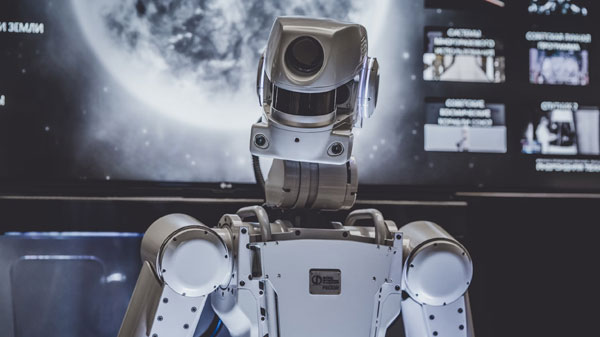Underwater walking robot introduced to aid rescue in submerged environments

[Photo Credit to Unsplash}
MAB Robotics has recently introduced its groundbreaking 'Honey Badger' robot, a new tool designed for search and rescue missions in submerged environments.
Unlike traditional underwater robots that rely on propellers, this robot walks on four legs, allowing it to navigate flooded areas and can walk along submerged terrain.
This capability is crucial for disaster response where water impedes rescue efforts.
The Honey Badger represents a significant step advancement in applying robotics to real-world problems.
It excels in scenarios that are too risky for human responders.
This robot’s design allows it to perform in environments where traditional devices might fail, showcasing the blend of innovation and practicality in modern robotics.
These advancements reflect a wider trend in the robotics industry, focusing on developing machines that handle dangerous tasks across various scenarios.
For instance, China's Anshan Hengye Special Vehicle Manufacturing Co. has developed robots that fight fires in risky settings like chemical plants and subways.
These robots endure extreme heat and navigate hazardous spaces to control blazes, keeping human firefighters safe.
Another highlight in robotic innovation is the DARPA Subterranean Challenge, which emphasizes the importance of robotics in rescue missions.
Teams from around the world, including Carnegie Mellon University and Oregon State University, compete to create autonomous robots that navigate complex underground environments to locate and rescue people.
In Switzerland, Tethys Robotics introduced the Proteus, a minesweeping robot deployed by Swiss armed forces for underwater reconnaissance and ordnance disposal.
Its sophisticated sensors and AI enable it to perform in unclear and turbulent waters, reducing risks to divers.
The industry has also seen progress with ANYmal, a robot by Swiss company ANYbotics, originally from a project at the Swiss Federal Institute of Technology in Zurich.
This four-legged robot autonomously inspects industrial sites, navigating challenging terrains to assess safety and operational conditions, proving crucial in environments hazardous to humans.
From the labs of Carnegie Mellon University, the Biorobotics Lab developed a snake-like robot used in the 2017 earthquake in Mexico City.
It maneuvered through tight rubble, provided live video feeds, and helped locate survivors, showcasing how robots can aid significantly in disaster response without adding to the danger.
These innovations underscore the broad applications of robotics in ensuring safety and enhancing emergency responses.
Robots are increasingly present in scenarios that present high risks to human life, from industrial accidents to natural disasters.
The development of such robotic systems goes beyond technological advancement; it's also about creating practical solutions that can be deployed in real-world situations to save lives and protect properties.
As these technologies evolve, robots are set to handle more complex rescue operations, paving the way for a future where they are regular fixtures in emergency response teams.
Robotics is revolutionizing emergency response, making operations faster, safer, and more efficient.
The continued integration of these systems into safety protocols across the globe illustrates the potential of robotics to transform disaster response strategies.
This trend is not only about improving current methods but also about redefining the possibilities for future rescue operations.
The journey of robotics from experimental projects to integral parts of emergency response teams reflects a major shift in both technology and its applications.
As we innovation continues , the role of robots in societal safety mechanisms will likely expand, offering new solutions to age-old problems of disaster management.

- Hanna Yein Cho / Grade 11
- Yongsan International School of Seoul

![THE HERALD STUDENT REPORTERS [US]](/assets/images/logo_student_us.png)
![THE HERALD STUDENT REPORTERS [Canada]](/assets/images/logo_student_ca.png)
